How many of us have sat in bad meetings: no clear goals, no agenda, no preparation, no documents, no schedule, no minutes, no action items, no follow-up, and so on. We all hate these meetings and we all want to improve them. The aim of this article is to address a complication that often exists even when those other obstructions don’t: Time wasted because people aim at the wrong target.
In this post, I will suggest a way to cut your meeting time. Not by meeting about the same things faster, but by meeting about fewer things. This does not mean that you can do the work in 10% of the time. You have to devote significant out-of-meeting effort to resolve the issues, but working more efficiently, enjoying a happier mood, and achieving better results.
Swing Through The Ball
If you learned tennis or golf you must have heard your instructor say, “swing through the ball.” If you swing at the ball you will cut your swing short and will hit with significantly less power. Of course you will hit the ball as you swing through it, but the right aim is to finish the swing, not to hit the ball.
In the same spirit, “Meet to decide and commit.” If you meet to discuss, you will cut your effort short and will work with significantly less power. Of course, you will discuss in order to decide and commit, but the right aim is to do, not to talk.
Yet many teams practice “voodoo management.” They believe that talking about an issue is enough to (magically) solve it. They take pride of “working” on something while they only express opinions about what “ought to be done.” But as written here, there is no action without commitment. Not surprisingly, everybody feels frustrated because the issue remains unsolved “after all the time we spent talking about it.”
The Value of Information
Imagine you are locked up in a cell, incommunicado, for the next 24 hours. I offer to tell you the winning number of the lottery that will be picked this very evening. The will-be-winning ticket, worth $100,000,000, is still available. How much should you pay for the information?
Nothing.
This information is worthless to you because you cannot act on it.
Information is valuable insofar as it may allow you to produce better results that you would have gotten without it. Unless the information may lead you to act differently than you would have acted had you not known it, its value is zero.
Since you can neither buy, nor ask someone else to buy the lottery ticket, the winning number is worthless to you.
The same thing happens with a meeting. Unless the meeting may lead people to act in a different way they would have acted had they not had the meeting, its value is zero—no matter how efficiently it is run.
The Acid Test
Pick a red marker and search your agenda for terms such as “discuss,” “update,” “review,” and other non-decisive verbs. Cross them out and see what is left.
Then put any remaining item through the following three-question test:
- “What will we do differently if we succeed in this meeting?”
- “Why do we need to meet to accomplish this?”
- “How will this help us further the goal of the team?”
I bet that 90% of your meeting time goes away.



